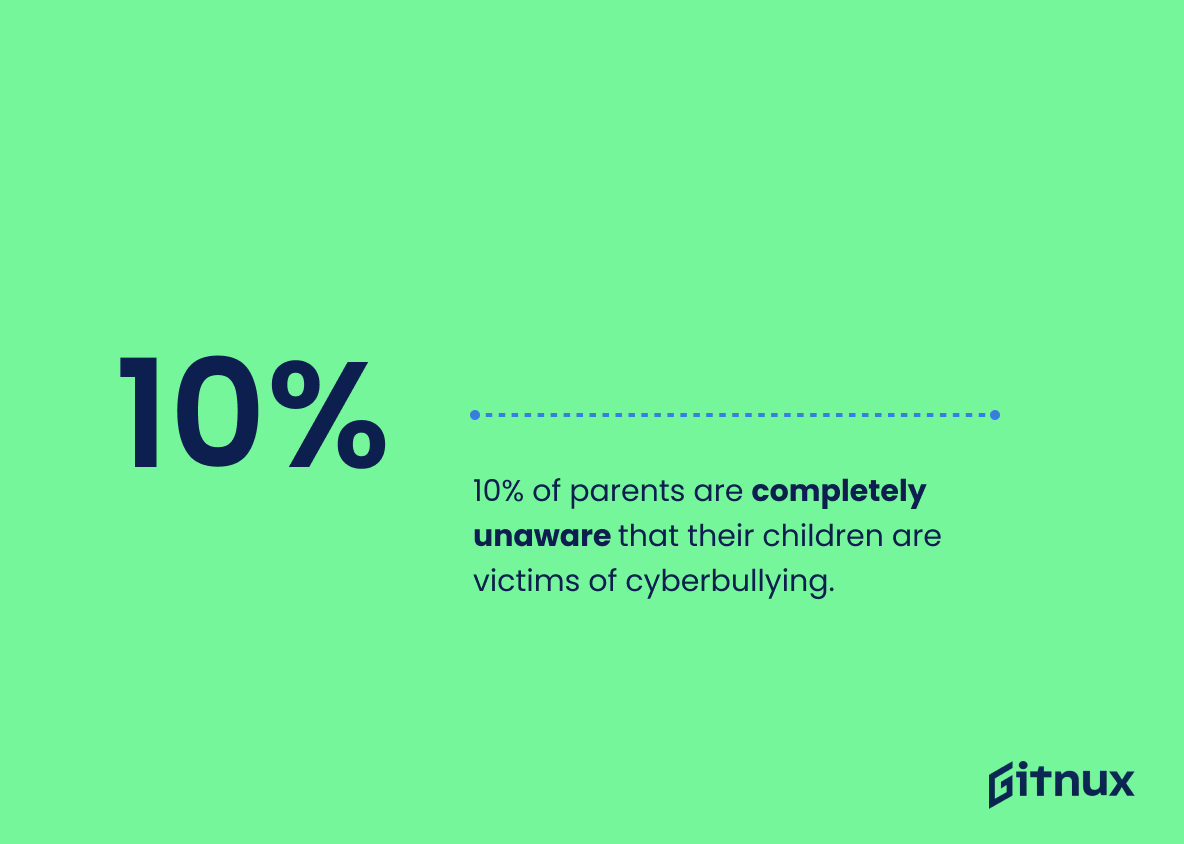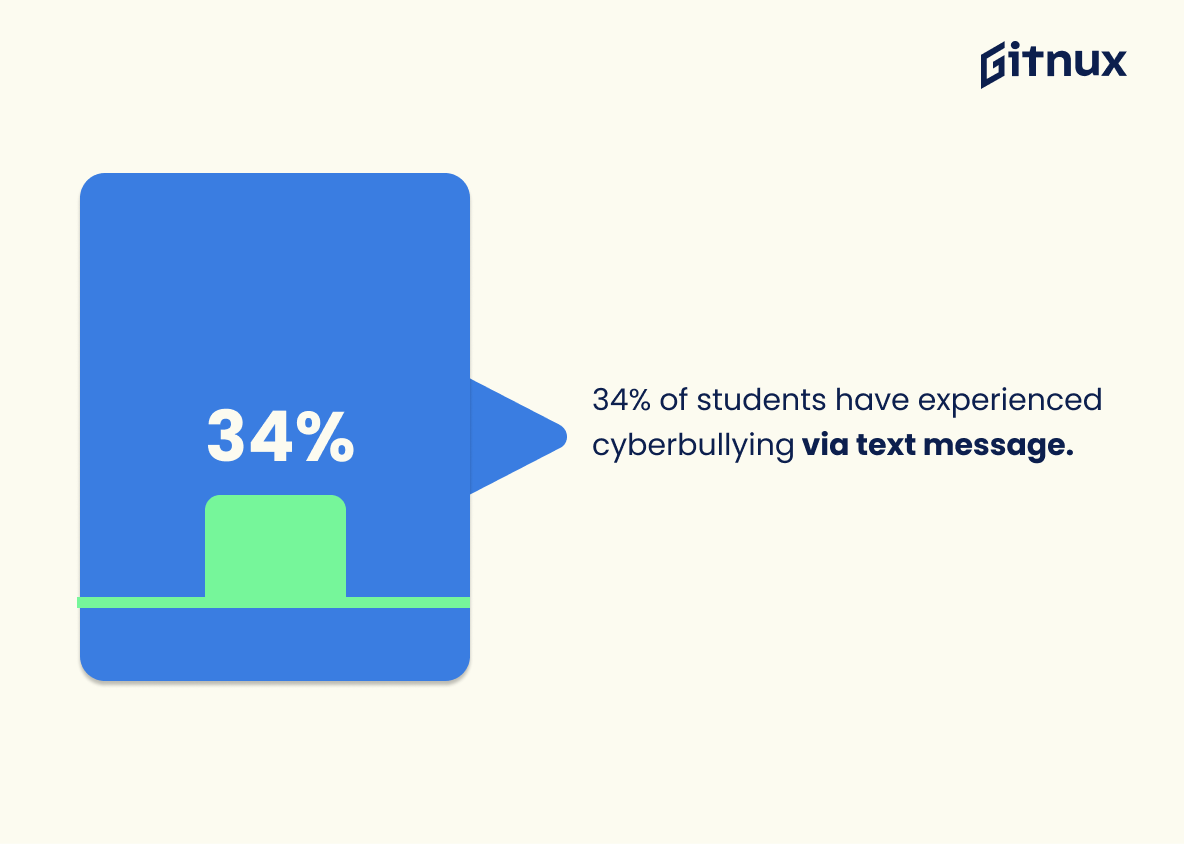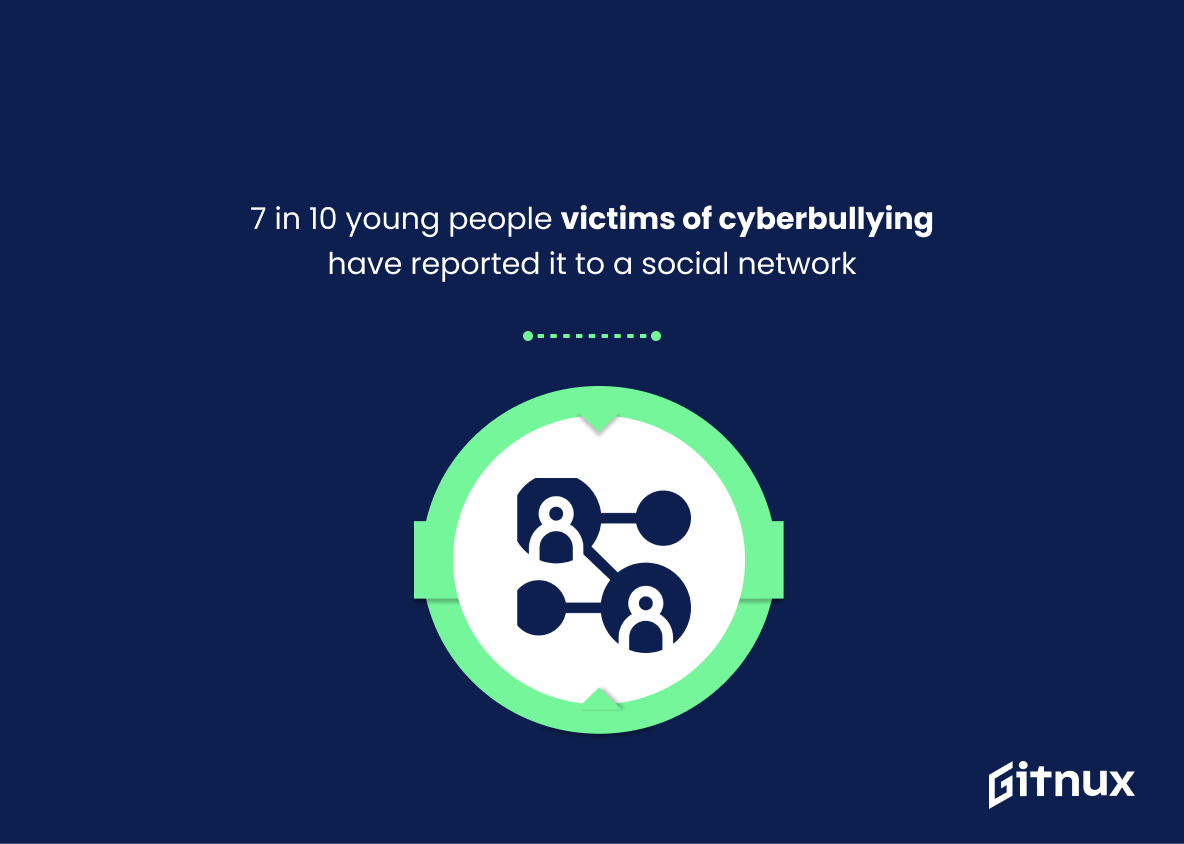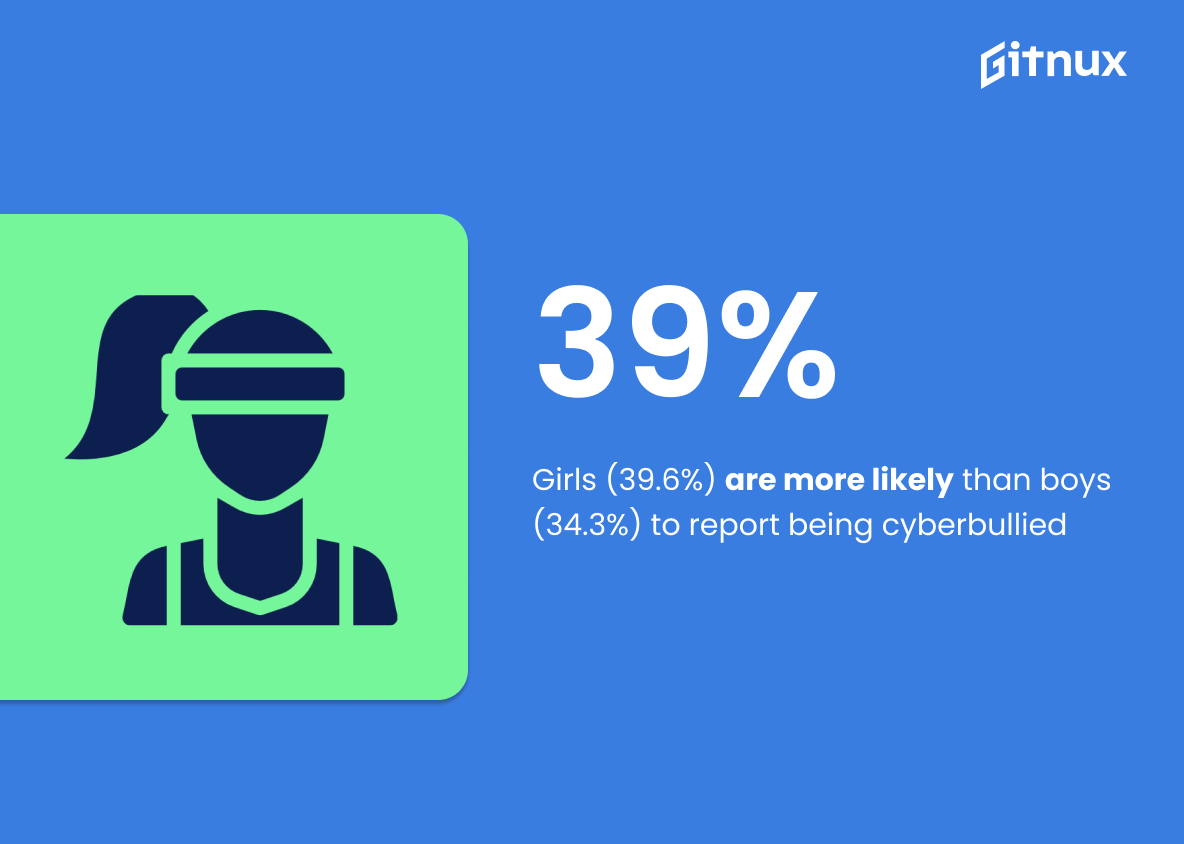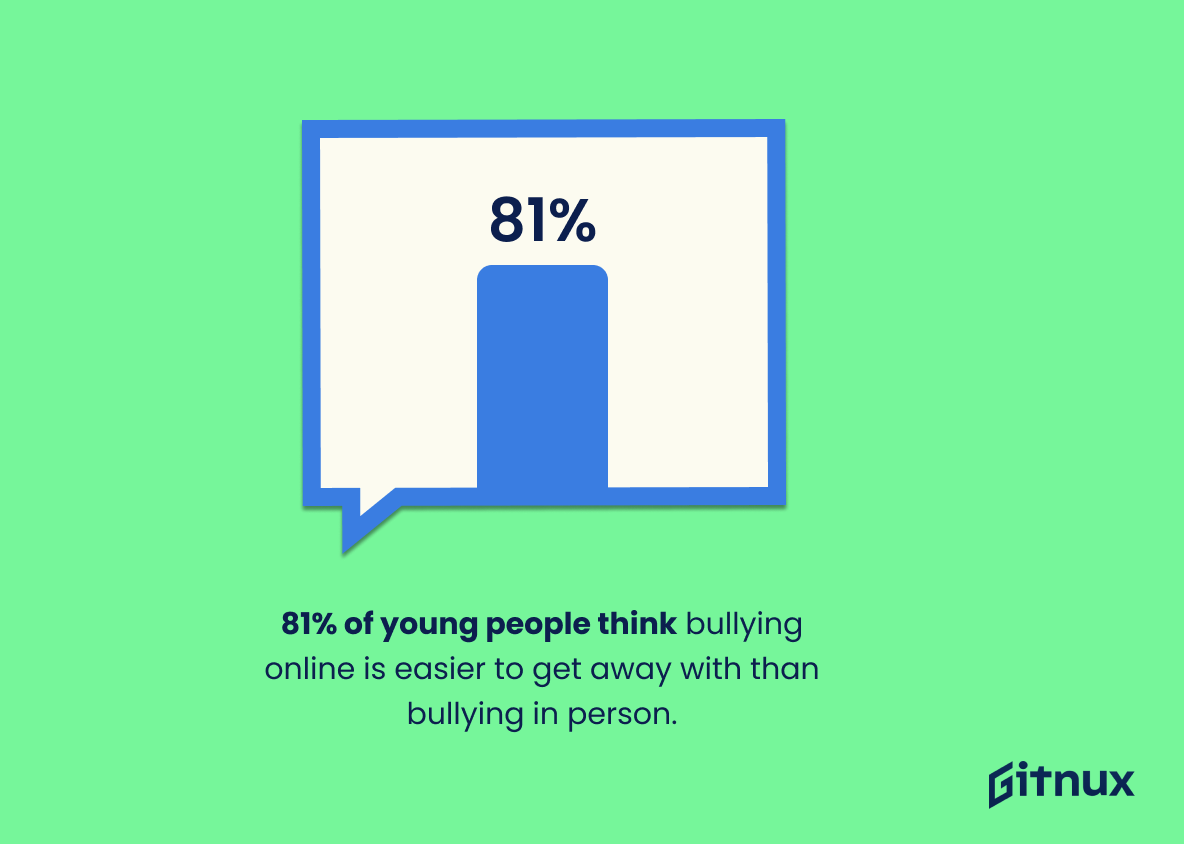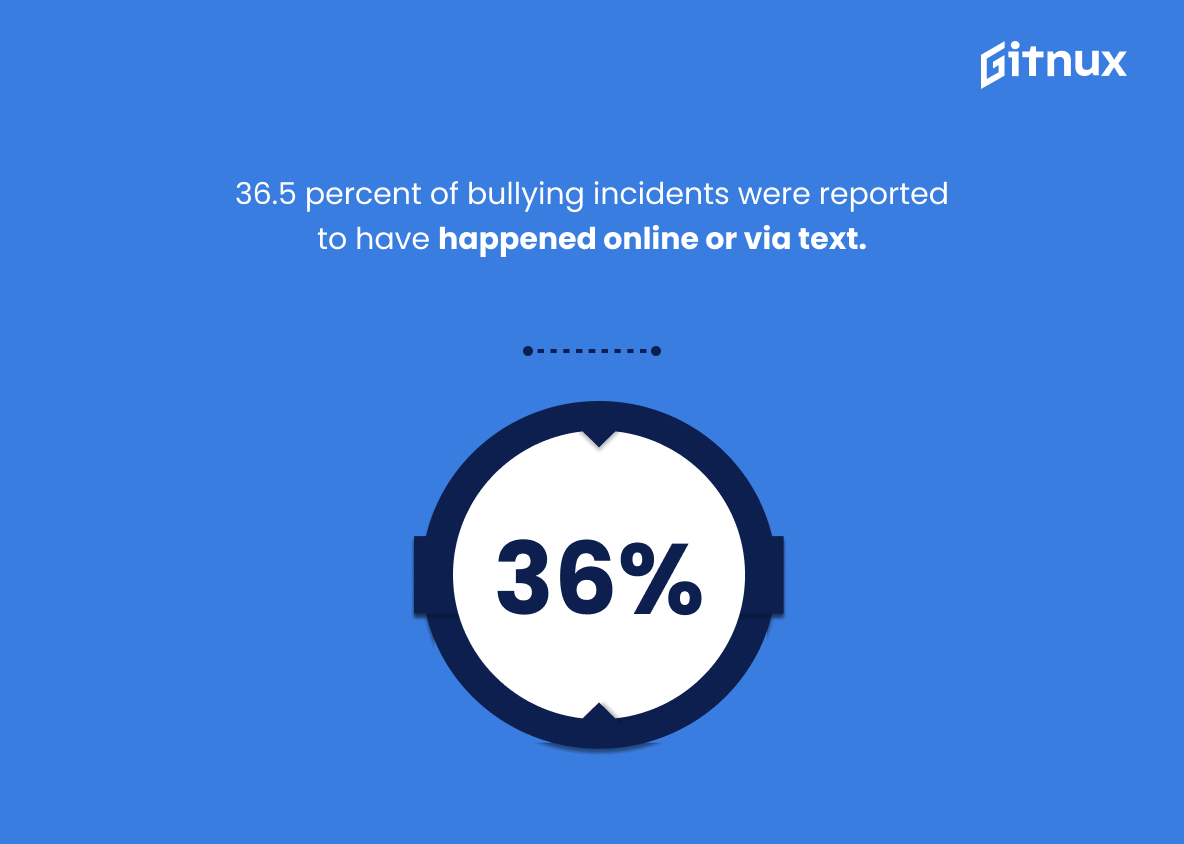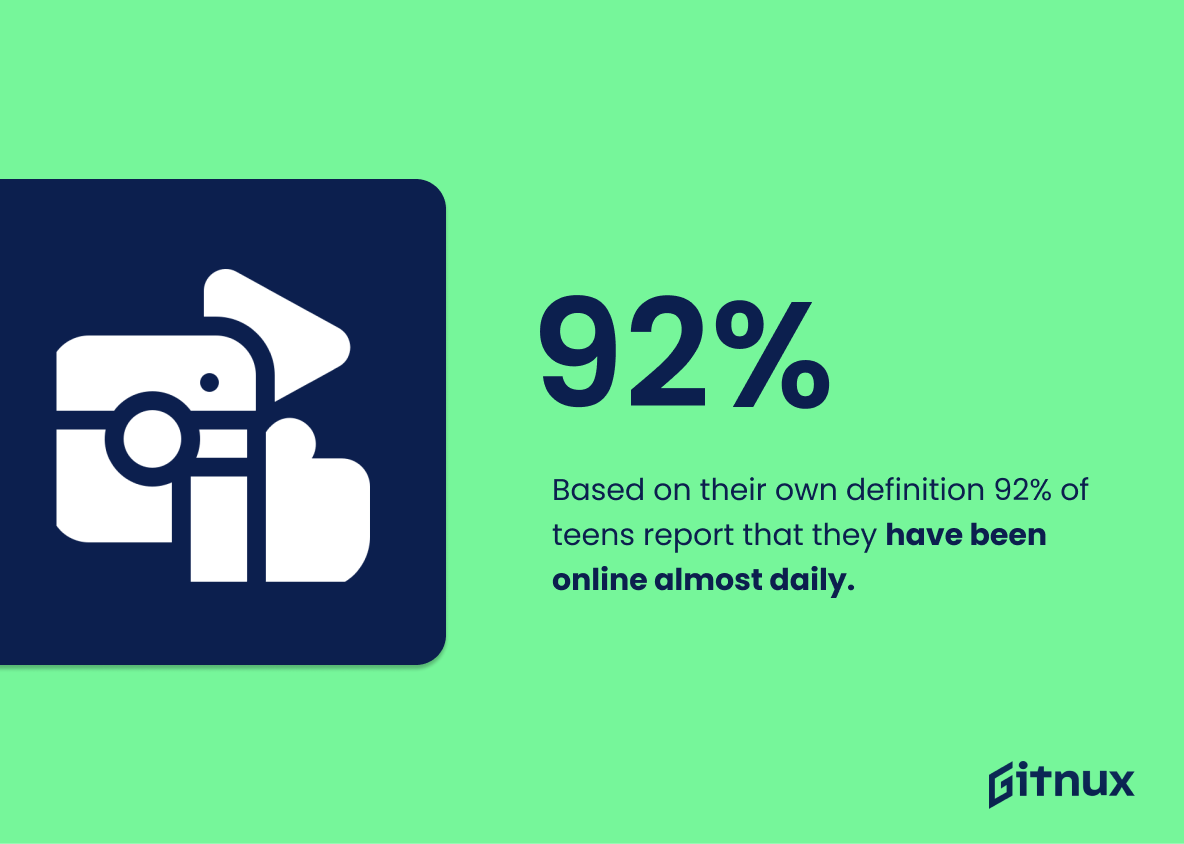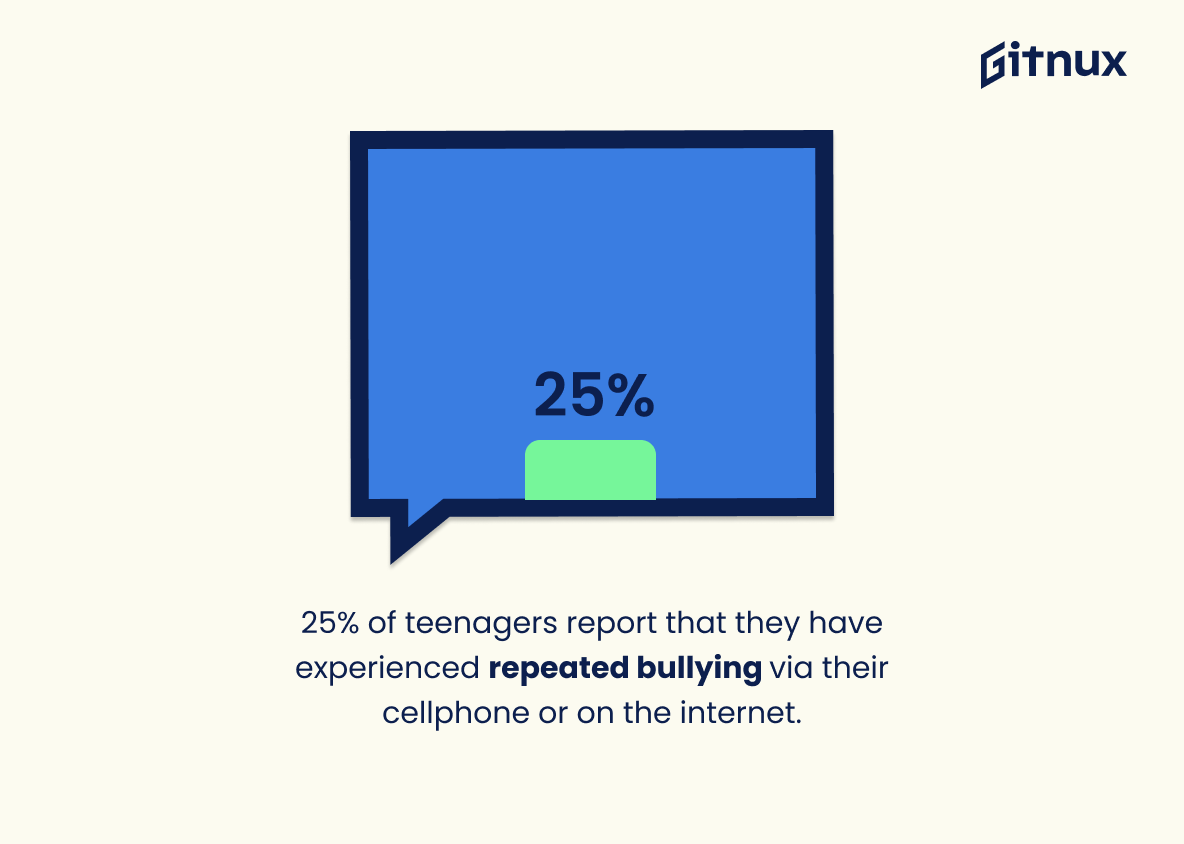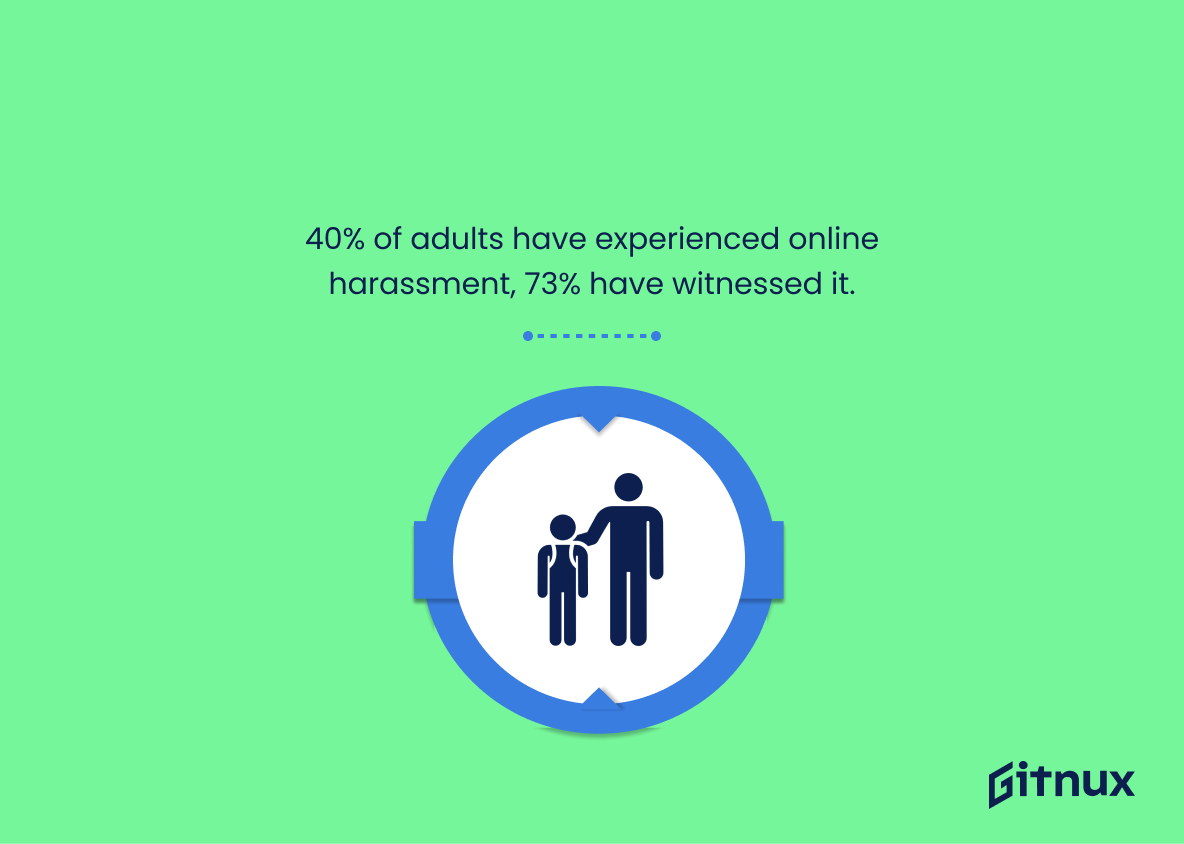In our tech-driven society, social media has profoundly ingrained itself into our daily lives; shaping interactions, aiding communication, and even influencing our emotions. Yet, alongside these advances, an alarming shadow emerges—cyberbullying. This unsettling product of the digital age has become an increasingly prevalent problem across various social media platforms. In this blog post, we delve deep into a treasure trove of significant data to reveal eye-opening statistics about social media and cyberbullying. These figures shed light on the scale and impact of this distressing issue, opening up discussions for potential solutions and safeguards. So, join us as we explore the numbers behind the screens.
The Latest Social Media And Cyberbullying Statistics Unveiled
Approximately 59% of U.S. teens have reported experiencing cyberbullying during their lifetime.
Embedded within this alarming figure – asserting that nearly 6 in every 10 U.S. teens have encountered cyberbullying – lies the undeniable testament to the shadowy undercurrent of online interactions. It remarks upon the magnitude of the cyberbullying epidemic afflicting teenagers throughout the United States, distinctly underlining the urgency for comprehensive solutions. In the narrative of a blog post addressing social media and cyberbullying, this statistic is no brief mention but rather a commanding, central pillar, gripping readers with its stern reality. It underscores the stark relationship between social media usage and the surge of negative, aggressive behaviors, supplying the readers a quantifiable reflection of the issue at the heart of digital spaces.
Around 37% of young people between the ages of 12 and 17 have been bullied online. 30% have had it happen more than once.
Highlighting such statistics as ‘37% of young people between the ages of 12 and 17 experiencing online bullying, with 30% encountering it more than once’ puts a stark focus on the alarming prevalence of online harassment. It underscores the importance of discussing and addressing cyberbullying in our blog post about social media. It paints a clear picture of cyber realm where our youth tread, suggesting that nearly two in five are subjected to digital hostility. Furthermore, the fact that almost a third have suffered this more than once indicates that such mistreatment is recurrent, not a one-time incident. This calls for immediate interventions and strategies to safeguard young netizens from falling into this vicious cycle of online bullying.
The most popular platforms where cyberbullying occurs are Instagram (42%), Facebook (37%), and Snapchat (31%).
Illuminating the cyberbullying landscape, the statistics vividly demonstrate the prolific prevalence of this digital menace on prominent social platforms. Instagram, Facebook, and Snapchat take the center stage in this unsavory drama with alarming percentages of 42%, 37%, and 31% respectively, painting a somber tableau of the pervasive issue. These numbers manifest the vital essence of awareness and intervention in curbing cyber harassment, particularly concerning these platforms. They underpin the importance of these platforms in strategizing preventative measures and safety features. Highlighted in the constellation of cyber abuse, these figures coax out the dark realities hiding beneath the veneer of interactive pleasures provided by social media platforms. For a reader diving into the realm of Social Media and Cyberbullying statistics, understanding these figures is like navigating a critical labyrinth, which can shape the comprehension of the acute issue and formulate strategies to combat it.
Around 10% of parents are completely unaware that their children are victims of cyberbullying.
Highlighting that almost one in every ten parents are oblivious to their children’s experience with cyberbullying underscores the silent and often undetected danger lurking within our digital world. This statistic, in a blog post on social media and cyberbullying, punctuates the crucial need for increased vigilance, heightened awareness, and proactive communication between parents and their children about online interactions. It showcases the imperceptibility of cyberbullying and the imperative to construct stronger protective measures within our virtual communities.
34% of students have experienced cyberbullying via text message.
Delving into the vortex of social media and cyberbullying stats, it’s significant to spotlight that 34% of students have endured the dark side of the spectrum – cyberbullying via text message. This alarming statistic reflects a grave reality, cascading implications for individual wellbeing and shaping discourses around online safety. It underscores a social issue spiraling in our digitally-enhanced world, serving as a sharp reminder that our blog post isn’t merely about numbers, but about the lives affected behind them. Key to unraveling the wider narrative of cyberbullying, this statistic acts as an eye-opening gauge of the severity of the situation, reinforcing the dire need for more effectual measures to safeguard our youth in the virtual realm.
Approximately 7 in 10 young people victims of cyberbullying have reported it to a social network, and only 1 in 4 had their reports taken seriously.
In the digital landscape narrative of social media and cyberbullying statistics, the figure that states ‘approximately 7 in 10 young people victims of cyberbullying have reported it to a social network, and only 1 in 4 have had their reports taken seriously,’ serves as a chilling embodiment of urgency. It spotlights the intensity and scope of the cyberbullying ordeal the youth are subjected to, and the unnerving challenge of inadequate response from social networks. It magnifies the need for these platforms to reinforce their safety measures, improveresponsiveness and display more steadfastness in handling report cases. This statistic, therefore, becomes a potent weapon in amplifying the magnitude of the cyberbullying dilemma, whilst pushing for reforms at the heart of social networks where such incidences are lodged.
Girls (39.6%) are more likely than boys (34.3%) to report being cyberbullied in their lifetime.
Highlighting the statistic that finds a greater prevalence of cyberbullying amongst girls (39.6%) compared to boys (34.3%) adds a crucial dimension to the conversation about social media and cyberbullying. Not only does it underscore the pressing reality of how prevalent cyberbullying is across both genders, but it also shines a spotlight on a concerning pattern of gender disparity. This pivotal insight calls for a more comprehensive examination into gender-specific experiences on social media and prompts further questioning about what unique pressures and challenges girls might be encountering in the digital world. It becomes an important call to action for addressing these differences in devising anti-bullying strategies, and prevention measures.
54% of teens say that they do not trust their parents to help solve cyberbullying issues.
In the digital panorama where cyberbullying is a pervasive reality, absorbing the figure that 54% of teenagers feel their parents cannot assist in resolving such issues furnishes a crucial perspective. Positioned in the frontline of a blog post about Social Media and Cyberbullying Statistics, it elevates the discourse to a paradigm where not only the prevalence of online harassment is highlighted, but also the widening chasm of trust and understanding between generations.
With this statistic intertwined in the fabric of the discussion, it invites readers, educators, and parents alike to rethink about proactive involvement and fostering a secure digital culture. It underscores the imperative for building robust communication dynamics with the younger generation to arrest the progression of cyberbullying. Moreover, it compels us to scrutinize the reasons behind the youth’s perceived absence of support, possibly paving the way for more effective strategies to combat this online menace.
81% of young people think bullying online is easier to get away with than bullying in person.
Interpreting the aforementioned statistic highlights the grim reality surrounding the realm of social media interaction. Diving into these figures gives us a critical insight: a staggering 81% of youngsters hold the belief that cyberbullying slips through the cracks more easily than its in-person counterpart. This revelation serves as a stark reminder of the cyber atmosphere’s darker side, as it casts a light on the covert network disguising countless online harassers who remain unpunished.
In order to fully grasp the complexities of the subject matter tackled in the blog post about Social Media And Cyberbullying Statistics, understanding the magnitude of this statistic is a must. It underscores the bitter truth that the relative anonymity provided by digital platforms can pave the way for more unchecked, relentless bullying. This statistic, distant as it may seem, urges us to engage in a discourse that amplifies the need for more substantial online policing and stricter content regulations to safeguard our youth against such harmful experiences.
7% of U.S. parents worry about their children being cyberbullied.
Delving into the daunting world of Social Media and Cyberbullying, we often overlook the impact it bears on the family at large. The assertion that 7% of U.S. parents are losing sleep over their child’s potential cyberbullying experiences highlights an often-silenced narrative – the role of a parent in a digitally interconnected age. This specific figure adds weight to the blog post, giving it a multi-dimensional perspective. It not only underscores the fears and anxieties parent bear, but also sharpens the focus on the much-needed dialogue about preventive measures, digital literacy, and emotional support systems.
83% of the time, the individual who was cyberbullied in a chat room knew the identity of the cyberbully.
Highlighting the statistic that 83% of the time, the individual who was cyberbullied in a chatroom knew the identity of the cyberbully, unveils a significant aspect of the social media environment. It underscores the harsh reality of virtual interaction, where the veil of anonymity often presumed in digital spaces is broken. This figure brings to the forefront the fact that these aren’t just random acts perpetrated by unknown offenders but often involve individuals known to the victim. This grim revelation warrants urgent attention as it fuels the pressing conversation about online safety, fostering empathic online environments, and implementing actionable measures against cyberbullying. Moreover, it may shape users’ attitudes toward their own social media habits, promoting more mindful online interactions to decrease instances of such behaviors.
24% of high school students (ages 14-17) have been involved in a form of bullying on social networking sites.
When painting a picture of the cyberbullying landscape among adolescents, it’s no less than alarming to spotlight the fact that almost a quarter of high school students, specifically between the tender ages of 14-17, are entangled in the harsh threads of bullying on their social networking platforms. Shedding harsh light on the magnitude of this problem, this stark figure underscores the urgent and immediate need to address and counteract this prevalent online menace lurking in our children’s virtual playground. In the grand symphony of the blog post about Social Media and Cyberbullying Statistics, this chilling percentage serves as a dissonant note, ringing the alarm bells for parents, educators, and policymakers to take a proactive stance against the dark underbelly of social networking sites.
In 2019, 36.5 percent of bullying incidents were reported to have happened online or via text.
Highlighting this statistic paints a gripping snapshot into the pervasive issue of cyberbullying. The digital age, with all its benefits and advancements, has also allowed a new form of bullying to evolve – online harassment. The 2019 figure, revealing that over one-third of bullying incidents were found to occur online or via text, underscores the alarming extent of this issue. Within the context of a blog post about Social Media and Cyberbullying, it serves as a wake-up call, highlighting the urgency to address and combat this growing problem. This figure not only depicts the severity of the situation, but also elucidates how our interconnected world, through the lens of social media and text, can become a platform for such harmful behavior. Readers viewing this statistic are urged to realize the significant cyberbullying phenomena, sparking a call to arms to be vigilant on these platforms, promote online safety, and formulate effective preventive measures.
Approximately 20% of students aged 12-18 experienced bullying nationwide in 2017.
Painting a vivid image of the severity of bullying in our society, the aforementioned statistic highlights that nearly one-fifth of all students aged 12-18 found themselves victims of this harsh reality in 2017. It’s a glaring spotlight on a broader issue that is at the core of a blog post focused on cyberbullying and social media. It underscores the need to delve deeper into how much of the bullying menace has migrated from school corridors to the online world. By connecting the dots between the overall bullying figures and cyberbullying specifics, we can expose the extent to which social media platforms have become the new playgrounds for tormentors, thereby shaping the national narrative on how to effectively combat this digital age threat.
Based on their own definition 92% of teens report that they have been online almost daily.
By juxtaposing the striking figure of 92% of teens reporting near-daily online activity with the context of Social Media and Cyberbullying, we juxtapose a potential playground against a potential battleground. It’s a crucial red flag as it paints a stark picture of how closely intertwined modern teenagers’ lives are with the digital world. Understanding this level of interaction is pivotal when deciphering the landscape of cyberbullying. The more participants in this digital arena, the higher the incidence of both victims and aggressors. Notably, given the apparent intricacy of these digital interactions in their daily lives, it is plausible that cyberbullying could have a significant impact on them. Therefore, this association sets the stage for understanding the severity and pervasiveness of cyberbullying in today’s digital age.
25% of teenagers report that they have experienced repeated bullying via their cellphone or on the internet.
In the sphere of social media and cyberbullying statistics, the glaring revelation jumps out – an alarming 25% of teenagers claim to have been victims of relentless bullying via their cellphones or the internet. The pervasiveness of this statistic significantly underscores the glaring menace in our modern, technology-driven society. It not only vibrantly amplifies how rampant the issue is among teenagers, but it also compels us to consider the ubiquitous and potent influence of social media and electronic devices as conduits for such abuse. This unnerving fact serves as a pressing call to action for educators, parents, and guardians to implement effective strategies to curb this growing problem, elevating the necessity for stringent online safety measures and cyber etiquette education.
On social media platforms like Facebook and Instagram, more than 1 in 3 users have experienced cyberbullying.
Diving into the digital cosmos of Facebook and Instagram, this number, more than 1 in 3 users experiencing cyberbullying, serves as a stark testament to the growing virtual menace in our interconnected universe. In dissecting the figures for a blog post on Social Media and Cyberbullying Statistics, this particular fact strikes an alarming chord. It not only underscores the prevalence of cyberbullying incidents but also lays bare the unsettling risk associated with these widely used platforms. This harsh reality can catalyze conversations about the urgent need for stricter digital security measures, countermeasures against online harassment, and education about digital civility to make our shared online spaces safer for all users.
40% of adults have experienced online harassment, 73% have witnessed it.
In the vibrant digital landscape, it’s alarming to note that almost half of the adult population is not immune to online harassment. This staggering statistic of adults experiencing online harassment significantly highlights the gravity of the cyberbullying issue permeating social media platforms. Not to mention, the numbers surge even higher when considering the 73% of adults witnessing this digital torment. In the blog post on Social Media and Cyberbullying Statistics, these figures serve as a glaring testament to the pressing need for robust preventative measures. They underline the urgency of raising awareness, educating individuals about digital etiquette and responsible online interaction, and the vital importance of collective efforts to eradicate this pervasive issue.
More than 60% of young people say that they have witnessed online bullying at least once in the last six months.
Shedding light on the statistic, it emanates an alarming siren, echoing the reality of modern social landscapes where over 60% of youth acknowledge witnessing cyberbullying at least once in the past six months. It’s as if every digital platform has this invisible alley, leading young minds towards a dark cyber territory, a space where people transform into bullies behind the safety of their screens.
Our blog post pivots around these hard-hitting digits, aiming to elucidate the harsh side of Social Media and Cyberbullying through data like this. The foretold number is not merely an abstract percentage anymore; it reveals an intricate yet disturbing narrative about young people’s experiences in the virtual world. This statistic undeniably amplifies the urgency and relevance of our conversation, setting the ground for us to explore further implications of unchecked digital behaviors, such as the psychological impact, rise of cybercrime, and the need for effective preventive safety measures.
Therefore, illuminating the cyberbullying scene with such statistics’ help is to stir a collective dialogue about bridging the gap between the virtual and real-world morality, thereby crafting a safer social network for future generations.
Conclusion
In the digital age, social media undoubtedly plays a pivotal role in facilitating communication and fostering virtual communities. However, the prevalence of cyberbullying has turned it into a double-edged sword. The alarming statistics reiterated in this blog post elucidate the gravity of the issue. It is hence imperative for parents, educators, and lawmakers to understand and address this growing menace. Ensuring robust parental controls, imparting digital literacy, and fostering a secure online environment are just a few steps in mitigating this issue. With concerted efforts, we can hope to leverage the positives of social media while significantly diminishing its potential as a platform for cyberbullying. Digital civility is a shared responsibility, and each one of us has a vital part to play in making the internet a safe space for all.
References
0. – https://www.internetsafety101.org
1. – https://www.www.stopbullying.gov
2. – https://www.www.dosomething.org
3. – https://www.www.broadbandsearch.net
4. – https://www.www.psychologytoday.com
5. – https://www.www.ditchthelabel.org
6. – https://www.www.pewresearch.org
7. – https://www.www.bullying.co.uk
8. – https://www.www.statista.com
9. – https://www.nces.ed.gov
10. – https://www.cyberbullying.org


